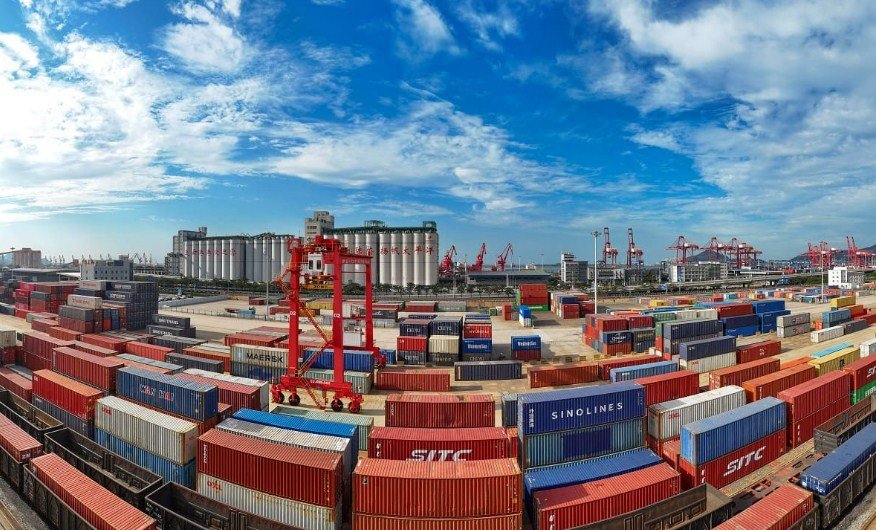The Middle Corridor, also known as the Trans-Caspian International Transport Route (TITR), is a multimodal transport network that connects China and Europe via Central Asia and the South Caucasus. It is one of the key initiatives to boost trade, connectivity, and cooperation among the countries along the route. However, to realize its full potential, the Middle Corridor requires a common vision, coordinated policies, and strategic investments from all the stakeholders.
The Benefits of the Middle Corridor
The Middle Corridor offers several advantages over other transport routes linking Asia and Europe, such as the Northern Route through Russia or the Southern Route through Iran and Turkey. Some of these benefits are:
- Shorter travel time and lower cost: According to the World Bank, the Middle Corridor can halve the travel time and reduce the cost by 30% compared to the Northern Route by 2030. This would make it more competitive and attractive for shippers and traders.
- Diversification of markets and sources: The Middle Corridor can open up new opportunities for trade and investment among the countries along the route, as well as with other regions such as the Middle East, Africa, and Southeast Asia. It can also reduce the dependence on a single transit country or mode of transport.
- Regional integration and cooperation: The Middle Corridor can foster closer ties and trust among the countries along the route, as well as with the European Union and China. It can also promote regional stability and security by addressing common challenges such as infrastructure gaps, border delays, and environmental issues.

The Challenges of the Middle Corridor
Despite its potential, the Middle Corridor faces several obstacles and risks that need to be overcome. Some of these challenges are:
- Lack of coordination and harmonization: The Middle Corridor involves multiple countries, modes of transport, and regulatory frameworks. This creates complexity and uncertainty for the operators and users of the route. There is a need for more coordination and harmonization of policies, standards, and procedures among the countries along the route, as well as with the EU and China.
- Insufficient infrastructure and capacity: The Middle Corridor requires significant investments in infrastructure and capacity building to improve its efficiency and reliability. This includes upgrading and expanding the railways, ports, terminals, logistics centers, and digital platforms along the route. It also requires enhancing the skills and competencies of the transport and customs officials and operators.
- Geopolitical and economic uncertainties: The Middle Corridor is subject to geopolitical and economic fluctuations that can affect its viability and sustainability. These include the relations and tensions among the countries along the route, as well as with the major powers such as the US, Russia, Iran, and Turkey. They also include the demand and supply of goods and services, as well as the price and availability of energy and other resources.
The Way Forward for the Middle Corridor
To overcome these challenges and realize the benefits of the Middle Corridor, the countries along the route need to adopt a common vision and a strategic approach. This involves:
- Developing a comprehensive and coherent strategy: The countries along the route need to develop a shared vision and a long-term strategy for the development and management of the Middle Corridor. This should include clear objectives, priorities, and indicators, as well as a roadmap and an action plan for implementation.
- Strengthening the institutional and legal framework: The countries along the route need to establish and empower a dedicated institution or mechanism to coordinate and oversee the development and operation of the Middle Corridor. This should include a high-level political dialogue, a technical working group, and a secretariat. They also need to harmonize and simplify the legal and regulatory framework for the transport and trade along the route, as well as to align it with the international standards and best practices.
- Mobilizing and leveraging the financial resources: The countries along the route need to mobilize and leverage the financial resources for the infrastructure and capacity development of the Middle Corridor. This should include tapping into the domestic and international sources of funding, such as the public and private sectors, the multilateral and bilateral donors, and the development banks. They also need to adopt innovative and sustainable financing models, such as public-private partnerships, blended finance, and green bonds.
The Middle Corridor is a strategic route for Eurasian trade and cooperation. It can bring significant benefits for the countries along the route, as well as for the EU and China. However, it requires a common vision, coordinated policies, and strategic investments from all the stakeholders. By working together, the countries along the route can make the Middle Corridor a success story for regional and global development.
